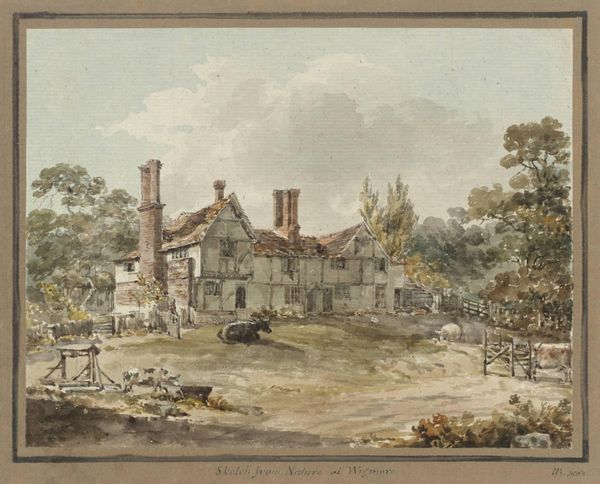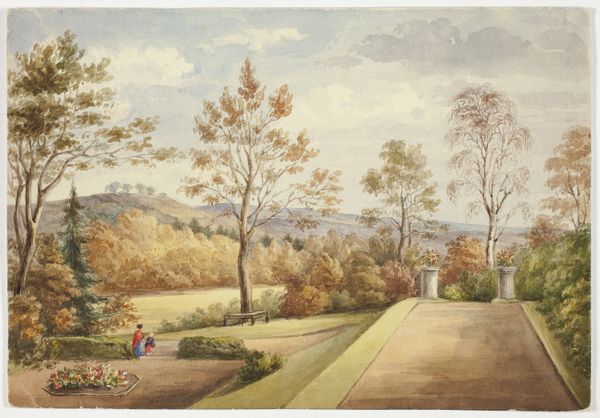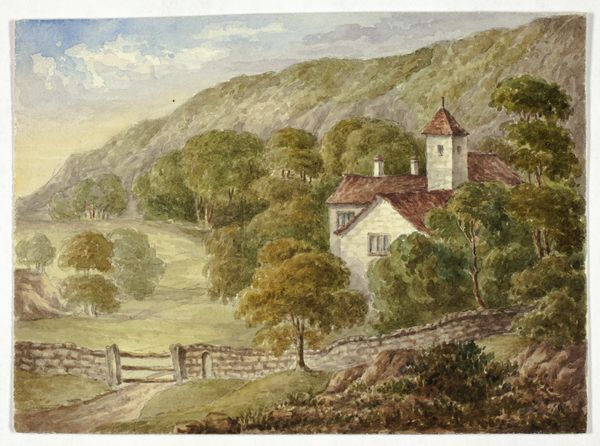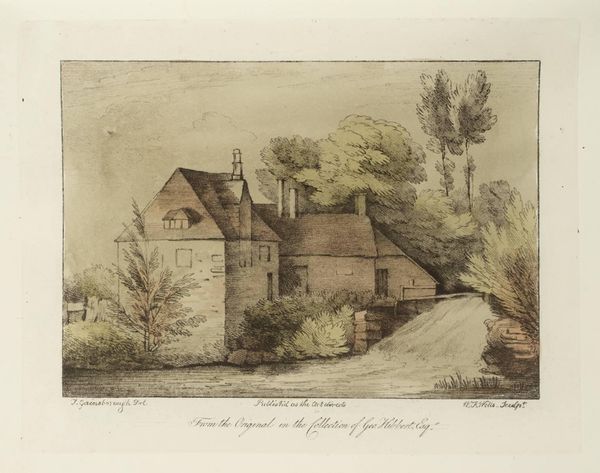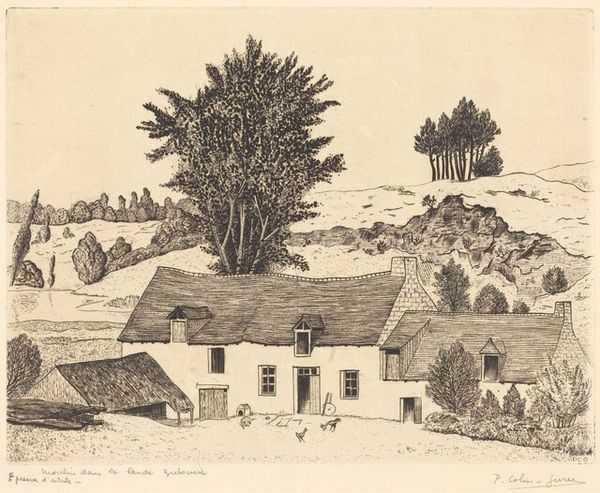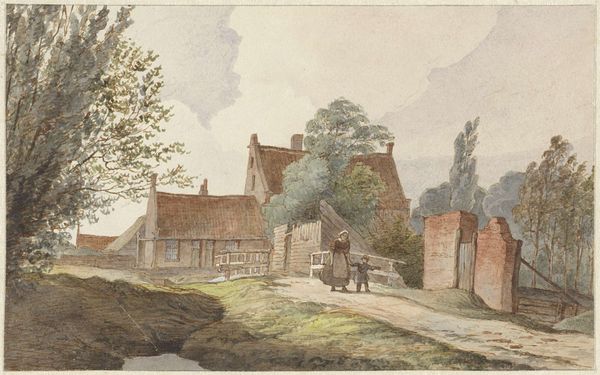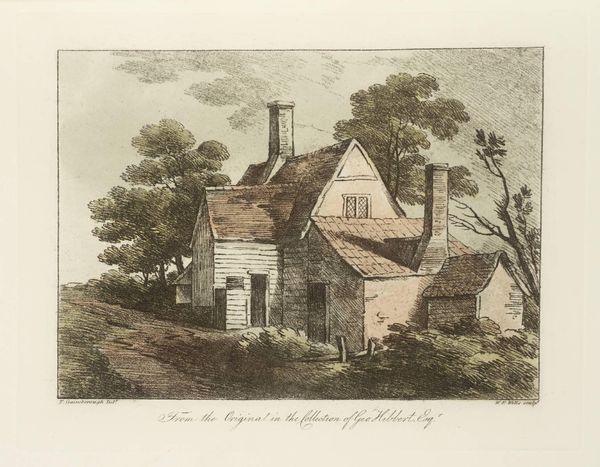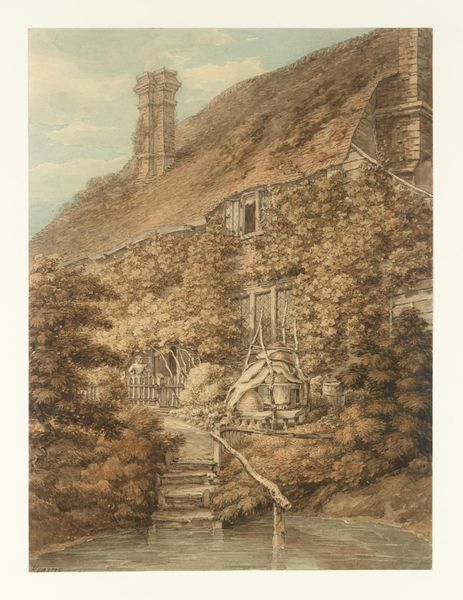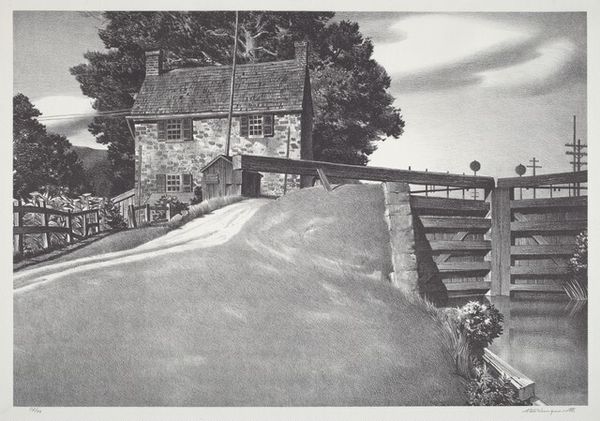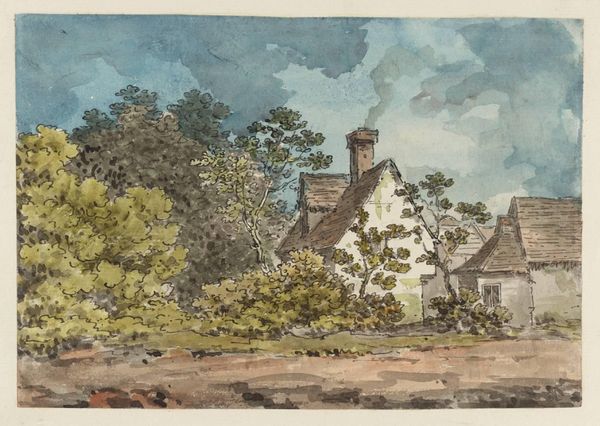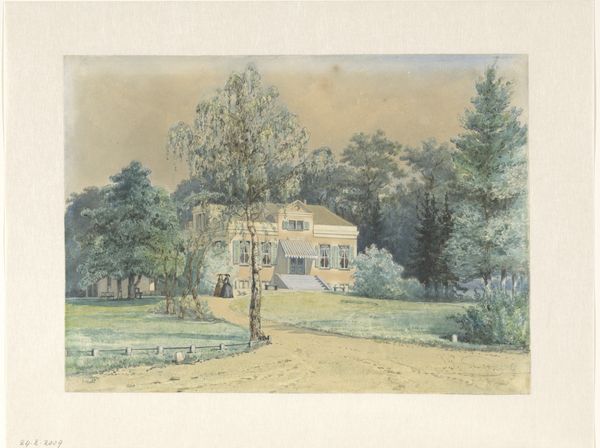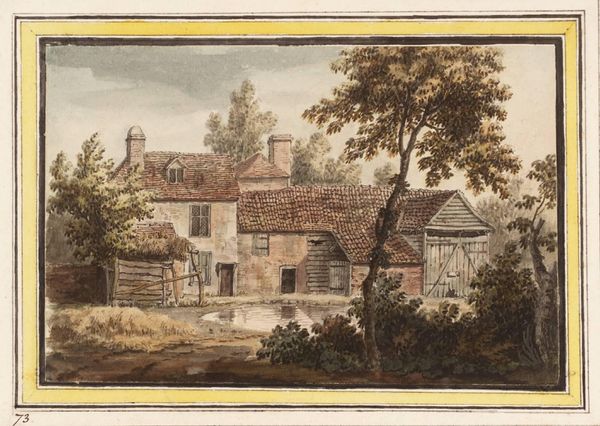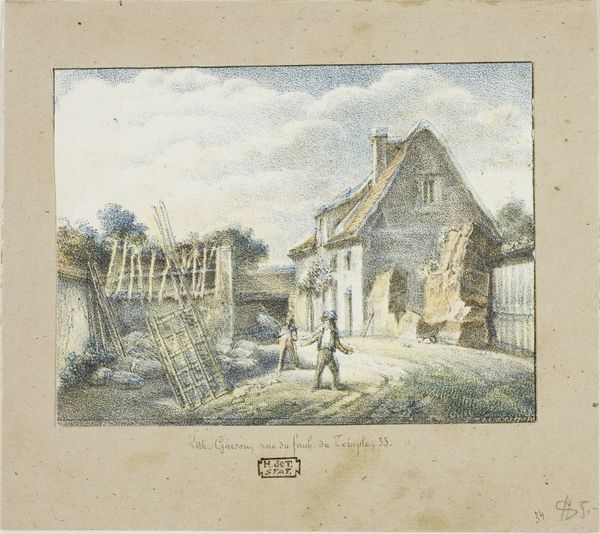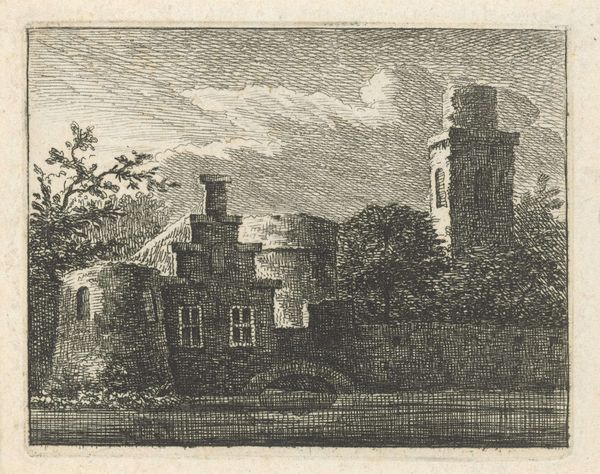
#
landscape illustration sketch
#
architectural landscape
#
botanical illustration
#
impressionist landscape
#
botanical photography
#
botanical drawing
#
greenery
#
botanical art
#
warm toned green
#
environment sketch
Copyright: Public domain
Curator: Let’s turn our attention to “Shepherd’s Cottage”, an understated landscape work by Eric Ravilious. The date is unknown. Editor: I’m struck by the subdued, almost melancholic mood. It feels like a scene captured on a cloudy day, even though the sun seems to peek through. The linear elements create a sense of depth. Curator: The work showcases Ravilious’s intricate cross-hatching technique in watercolor. Notice the textures in the stone of the cottage, achieved through layering. There’s a dedication to showing the way these buildings were built—material, layer by layer. Editor: It's interesting how the cottage, while central, doesn't dominate. The composition includes the shepherd—a tiny figure—linking labor to the land. I think the rural English experience is crucial to consider; there's often a class tension in such scenes. Curator: Definitely, and consider the societal backdrop. England during that era experienced major shifts. People moved from rural to more urban and industrial jobs, but they also started producing media celebrating rurality. Editor: Precisely. The nostalgia is almost palpable. But whose nostalgia? Are we romanticizing the hard labour and socio-economic realities for agricultural workers? This artwork, although seemingly peaceful, invites deeper inquiry. Curator: Agreed. Even the apparent simplicity is deceiving. Ravilious' technique is anything but simple—this artwork speaks volumes on how one uses technical know-how to express both physical landscape and cultural conditions. Editor: Overall, this work prompts crucial discussion regarding identity, socio-economic relations, and cultural memory embedded within visual representation of space and labour. Curator: This subtle artwork teaches us that an exploration of landscape illustration holds both intrinsic aesthetic value and the potential to inform critical insights into labour. Editor: The questions it leaves with us about whose stories are privileged is very important.
Comments
No comments
Be the first to comment and join the conversation on the ultimate creative platform.
